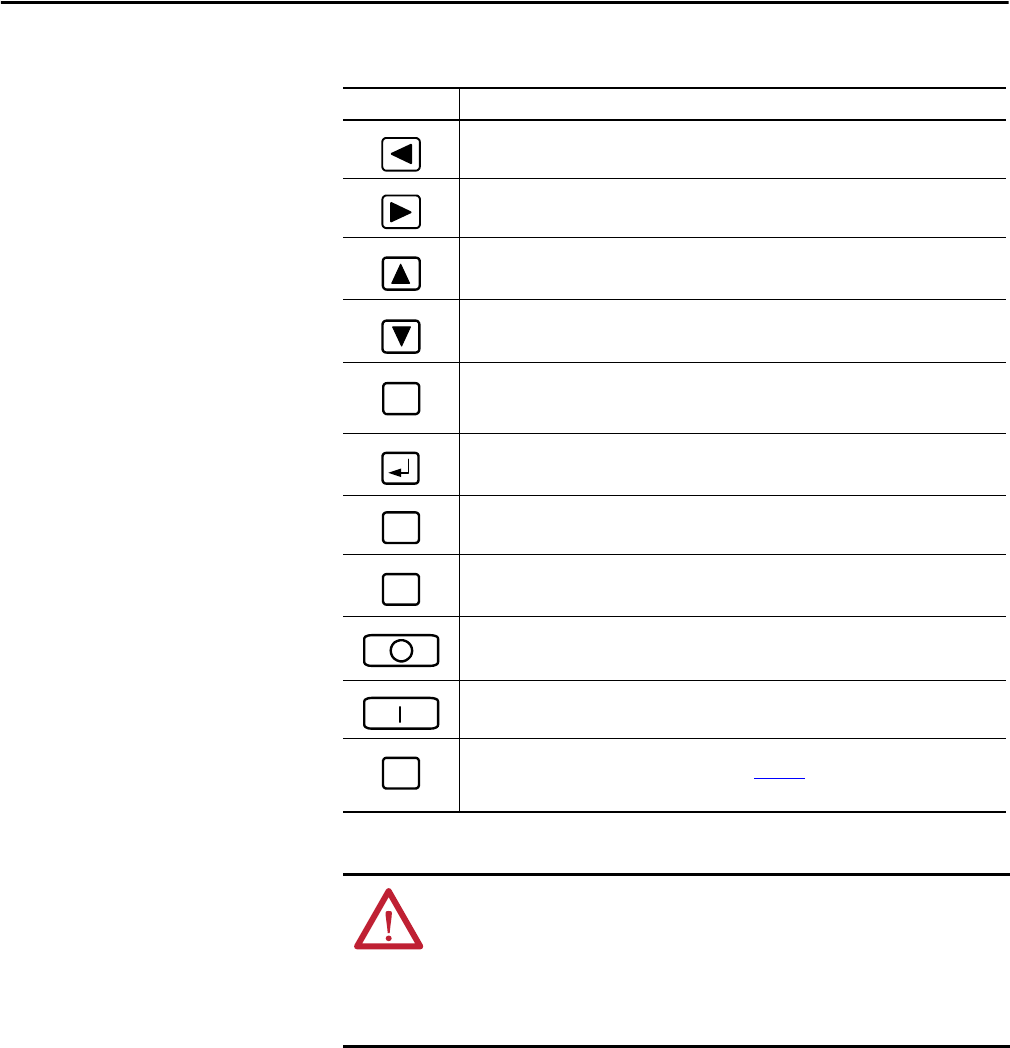Owner's manual
Table Of Contents
- Front Cover
- Important User Information
- Summary of Changes
- Table of Contents
- Introduction
- About the Drive
- Identifying the Drive by Cabinet Assembly ID Number
- LiquiFlo 2.0 Drive Component Locations
- Identifying the Power Module by Model Number
- AC Line I/O Board Description (Frame 3 Only)
- Standard I/O Board Description (Frame 3 Only)
- Combined I/O Board Description (Frame 4 Only)
- DPI Communication Ports
- Optional Equipment
- Planning the Installation
- Mounting The Power Module and Grounding the Drive
- Installing Input and Output Power Wiring
- Completing the Installation
- Using the Start-up Routines
- Programming Basics
- Parameter Descriptions
- Troubleshooting the Drive
- Verify that the DC Bus Capacitors are Discharged Before Servicing the Drive
- Determining Drive Status Using the Status LEDs
- About Alarms
- About Faults
- Diagnostic Parameters
- Common Symptoms and Corrective Actions
- Replacement Parts
- Board Replacement, Firmware Setup Procedures
- Troubleshooting the Drive Using the OIM
- Checking the Power Modules with Input Power Off
- Technical Specifications
- Using the OIM
- Installing and Removing the OIM
- Display Description
- OIM Menu Structure
- Powering Up and Adjusting the OIM
- Selecting a Device in the System
- Using the OIM to Program the Drive
- Monitoring the Drive Using the Process Display Screen on the OIM
- Displaying and Changing the OIM Reference
- Customizing the Process Display Screen
- Customizing the Function Keys
- Controlling the Drive From the OIM
- LiquiFlo 2.0 Drive Frame 3 Wiring Diagrams
- LiquiFlo 2.0 Drive Frame 4 Wiring Diagrams
- Index
- Back Cover

238 Rockwell Automation Publication D2-3518-3 - May 2013
Appendix B
Key Descriptions
Key Function
Scroll through options or user function keys, move cursor to the left.
Scroll through options or user functions keys, move cursor to the right.
Scroll through options, increase a value, or toggle a bit.
Scroll through options, decrease a value, or toggle a bit.
Exit a menu, cancel a change to a parameter, or toggle between program and process (user)
display screens.
Enter a menu, select an option, or save changes to parameter value
Enable Hand (manual) reference control.
Release Hand (manual) reference control.
Stop the drive. Clear a fault if the clear faults function for the OIM is enabled using the Logic Mask
(276) and Fault Clr Mask (283).
Start the drive if start from the OIM is enabled via the Logic Mask (276) and Start Mask (277).
F1 though F4: Predefined or user-configured functions. The definition of each key is shown
directly above the key on the display. See item ① in Figure 94
.
ATTENTION: When switching from Auto to Hand, or Hand to Auto, the drive will
ramp to the reference level provided by the new source at the rate specified in
Accel Time 1 (140), Decel Time 1 (142), Accel Time 2 (141), or Decel Time 2
(143). Be aware that an abrupt speed change may occur depending upon the
new reference level and rate specified in these parameters. Failure to observe
this precaution could result in bodily injury.
ESC/
PROG
HAND
AUTO
F1










